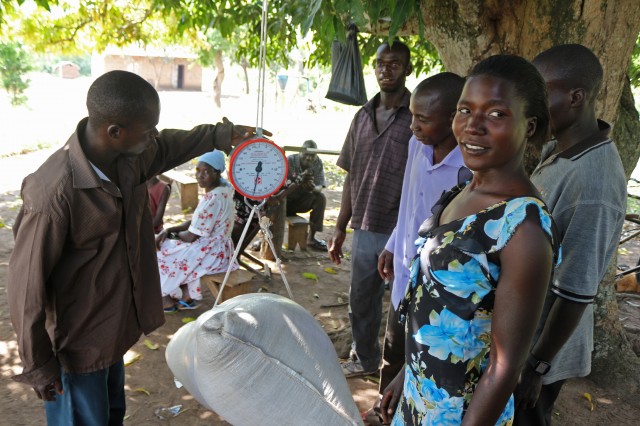
Six challenges and opportunities for a better post-2015 development data revolution
14th April 2015
The data revolution in international development continues to draw attention and take shape as the third annual International Conference on Financing for Development approaches in Addis Ababa this July. At Evidence for Development, the pursuit of strong data and baselines for programme design, monitoring and evaluation is central to our work in measuring and supporting household livelihoods. As we commented late last year, mobile-collected data, start-ups and crowdsourcing are among the emerging trends for development data and are transforming opportunities for harnessing empirical information. What’s on the agenda now for data in post-2015 development? We’ll give you a quick introduction to a few of the most important points.
#1 – Translating the desire to have more data into the means to produce it
Who pays for data collection and analysis? Some of the traditional development donors are finding their development budgets cut or inadequate to meet the rising demands and needs for funds. Emerging powers are stepping in to some extent, providing FDI and support to multilateral organizations. Private sector engagement also represents an opportunity for development, and NGOs that have both access to precious unrestricted funds and more rigorous approaches may also be able to pay for their own data collection. In this shifting development funding context, the sustainability and effectiveness of the data revolution will require seamless coordination of these many sources of funding – together with the translation of calls for better data into actual financing of suitable studies, projects and systems.
#2 – Promoting better data availability and greater transparency
A ‘data-forward’ predisposition is well on its way to becoming an established norm. However, what also has to follow is the ready accessibility of data. At the World Bank and countless other international organisations, there is strong recognition that measurable information is paramount to forming appropriate solutions to development problems. This requires better access to data for the people who can implement and shape those solutions – whether via open-source platforms, reliable communication of findings, or opportunities to download and manipulate information themselves –giving the data more practical value for critical stakeholders. Take a look at EfD’s open-source Individual Household Method (IHM) platform for an example of how data collection and analysis software can be shared.
#3 – Optimising the use of partnerships in data production
Much of the data production and analysis accomplished by Evidence for Development is done in partnership with universities, like the Polytechnic University of Bobo-Dioulasso in Burkina Faso, with charities like Farm Africa, or with climate or food security networks like the USAID Famine Early Warning Systems Network (FEWS NET), among others. The benefits of collaboration reverberate through future projects as capacity to both produce and understand data is built with each new partnership established and training programme completed.
#4 – The data revolution is about more than just quantity
While having a lot of information can be useful, the relevance of big data to development often relies not so much on quantity but on understanding micro-scale realities. Making sure that data collection and analysis includes details such as sex-specific or age-specific information can go a long way to identifying patterns of poverty or vulnerability. Similarly, accessible means are needed to transform raw numbers into decipherable stories and real-world impacts. Of course, data quality remains critical too – while crowdsourcing and aggregation offer new possibilities, these numbers must be checked diligently for the post-2015 development data revolution to succeed.
#5 – Re-evaluating the purpose of data
It is tempting, with a proliferation of tech tools, to collect data indiscriminately on international development projects. However, this may not be the best course of action. With pushes for data in each given situation and project, it is worth asking: what is the purpose of this information and how will it support the project’s goals? For example, household-level data often relies on in-person interviews that inevitably are subject to time constraints which can be exacerbated by each new set of questions, and endless collection of statistics may prove disenchanting to interviewees. The prioritisation of different data competing for attention might be required. The purpose of data collection must be well-defined as we move forward, to avoid running the risk of turning data as a means to development into data as the ends.
#6 – Emphasising local capacity
How can data be better utilised and made relevant to real-world needs? The answer lies largely in prioritising local systems. Through investments in (for example) African institutions that can build local capacity to collect high quality information using tools such as IHM and HEA, local analysis will follow. If reliable data is to be routinely collected, updated and used for decision making, analysis has to be done through systems that are run and maintained locally. Having enhanced capacities to evaluate and find purposes for mass information will push the data revolution forwards from concept status into workable systems for promoting livelihoods.
Stay engaged with Evidence for Development on data, policy and more on our website (efd.org) and Twitter feed (@EfD_UK, or www.twitter.com/EfD_UK). We’ll be posting shortly on the impacts of climate change on food security, refugee livelihoods in urban and rural settings, and how NGOs can better demonstrate the results of their work.
Categories: Capacity building, Data, Monitoring and evaluation

Comments
No comments yet.
The comments are closed.